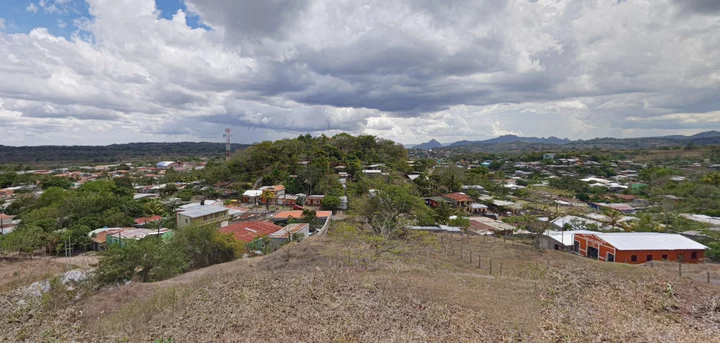A view of Camoapa, Nicaragua. From Google Street View.
Camoapa, Nicaragua is a town of about 18,000. Its main industry is cows; it is surrounded by verdant fields and hills. Its similarities to Arcata made it a prime target to become its sister city in the ‘80s — their need for regular clean drinking water and healthcare supplies, which were affordable enough to pay for by mass fundraising, also helped.
In the years since, the main form of cultural exchange between Camoapa and Arcata has been the annual I Street Block party, which raises money for projects in Camoapa. Camoapans sometimes visit Arcata; a mayor, high school students, and nurses have all made the trip. The relationship is at a content equilibrium.
But there might be another sibling to add into the mix someday. Arcata’s City Council meetings have been inundated for over a year with people asking the council to consider becoming a sister city with Gaza in Palestine as a way to support those afflicted by the recently-paused war with Israel. Although the councilmembers have shown no interest in that idea, it got a few people thinking that it’d be worth it to have a framework for evaluating which cities might make another good sister city for Arcata if one’s proposed.
Some guidelines are currently in the works. They’re being developed by Wesley Christensen, a Cal Poly Humboldt political science student and intern for the city, along with city manager Merritt Perry. They might be presented to the city council next month, but there’s no firm plan on when that might happen.
Perry said in an interview with the Outpost that activists from the Redwood Peace and Justice Coalition had told him about Boulder, Colorado’s sister city partnership with Nablus, a city of 156,000 in Palestine. They’d asked him why Arcata hadn’t done something similar with Gaza, but what interested Perry was the robust organization created to make the relationship functional and worthwhile for both communities.
Perry said that the framework wasn’t set in stone, but a few of the things Arcata might want to consider when evaluating if they should take one on are things like electing a board that oversees the relationship or facilitating some face-to-face meetups. It also might be best if the city is similar in size to Arcata.
Arcata is still laying the foundations of policy for a sister city and isn’t looking for any specific counterpart abroad right now, but Perry mentioned somewhere in Oaxaca, Mexico might make a good candidate because of the many Oaxacan immigrants in Humboldt.
Perry said making sure both sides benefit from the exchange — whether it’s culturally or educationally — is also important, as is keeping Arcata from expending too much time and money into the project. Camoapa’s partnership with Arcata is built on fundraising and requires no monetary input from the city.
“Otherwise, we could say ‘Oh, we’re a sister city with Gaza City. Cool. We’re done. Let’s all congratulate each other,’ and then there’s nothing happening,” Perry said. “…We have plenty of problems to deal with at home, and our resources are scarce, like a lot of cities. So how do we balance out our needs at home, but then still keep our perspective on the world and other communities and create those connections?”
Christensen did not respond to requests for comment.

CLICK TO MANAGE